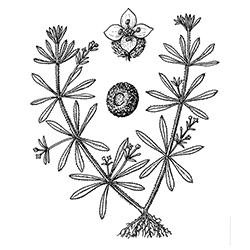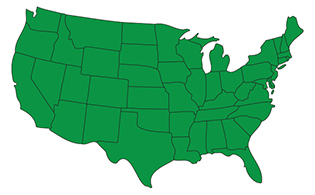

Catchweed Bedstraw
Galium aparine
Catchweed Bedstraw can be either a summer or winter annual broadleaf weed. This versatile plant is also known as Cleavers, Bedstraw, Catchweed, Goosegrass, Scratch-grass, Grip-grass and its scientific name, Galium aparine.
Identify

Whorled

Lanceolate
Catchweed Bedstraw is often found attached to or climbing over other vegetation. Its stems, leaves and fruit have short prickly hairs, allowing this broadleaf weed to cling to other plants. Its stems are square, featuring four ridges. The upper surfaces of the leaves are hairy while the lower surfaces have short spiny hairs along the mid-rib. Catchweed also has a branched and shallow fibrous root system. Catchweed Bedstraw blooms small, white flowers that have four petals with pointed tips, and the plant is in bloom for one to two months from late spring to mid-summer. Reproduction occurs by seeds.
Life Cycle
This broadleaf weed grows in natural and disturbed habitats, including woodlands, thickets, meadows, flowerbeds, along fence rows, ditches, and the edges of dumps and waste areas. Catchweed Bedstraw can be found throughout much of the eastern and midwestern United States.

Control
Strong cultural practices—such as proper mowing and watering—can help to prevent Galium aparine by creating dense grass, which inhibits the broadleaf weed’s ability to grow. Physical removal (i.e., pulling weeds) can be effective, though you run the risk of spreading the seeds to additional areas of your lawn and landscaping.







